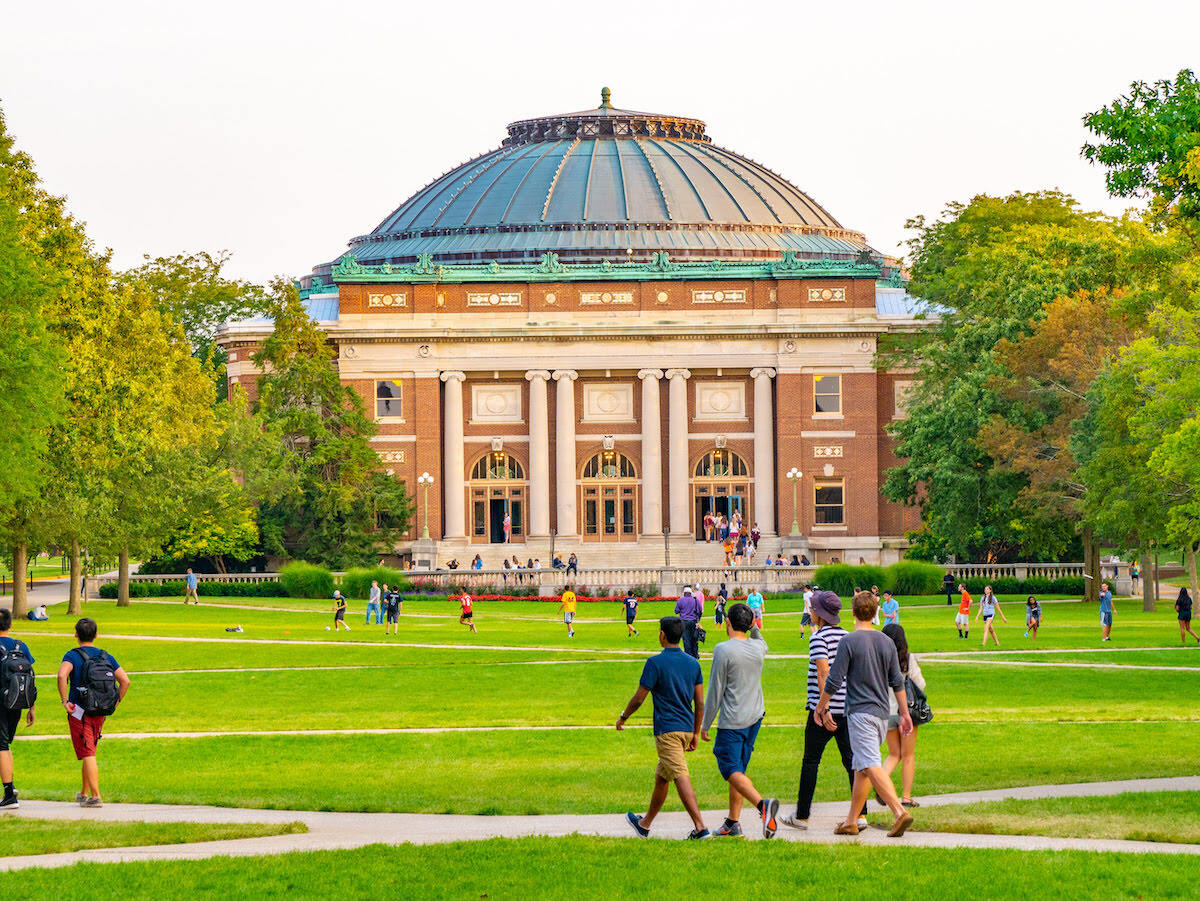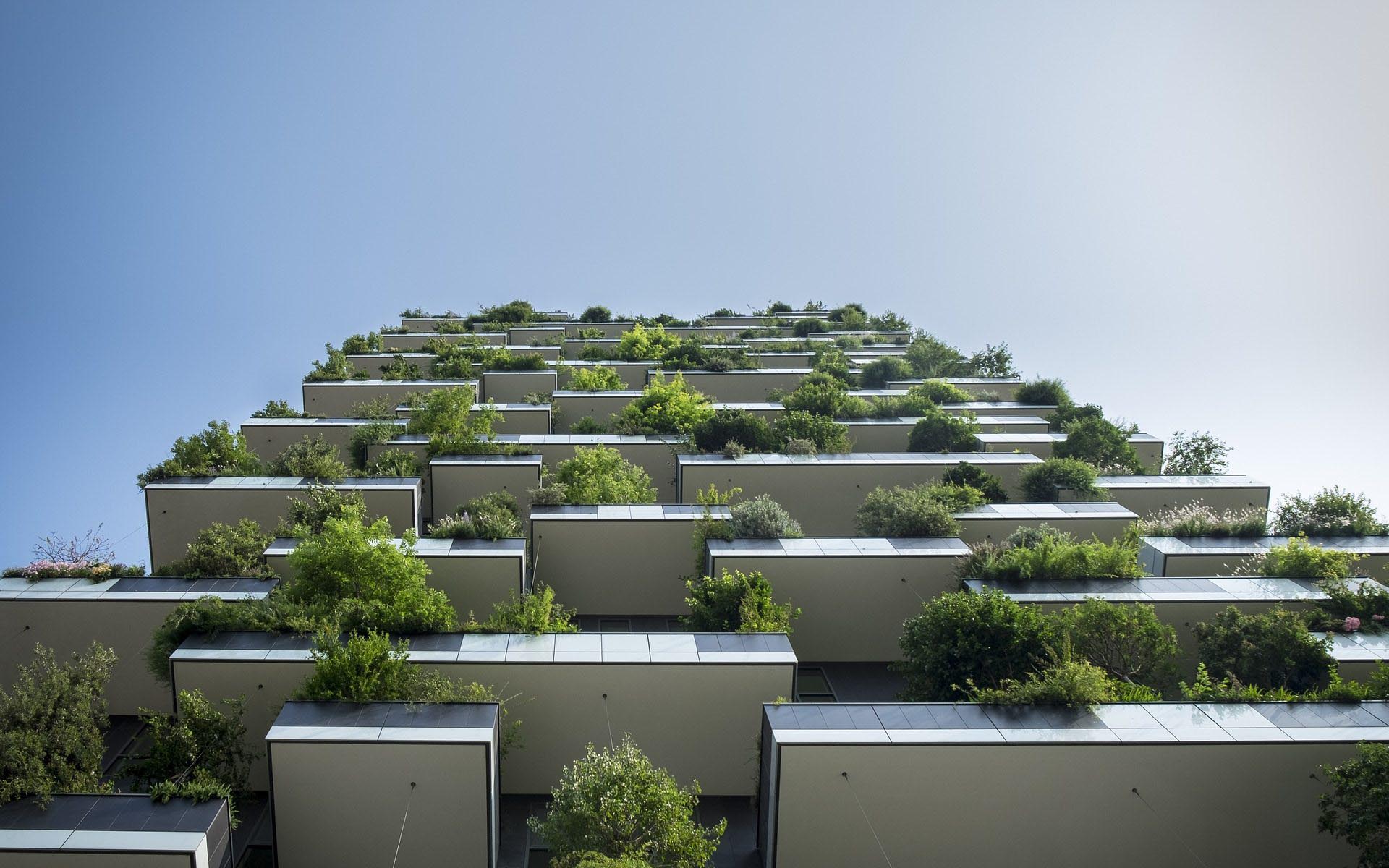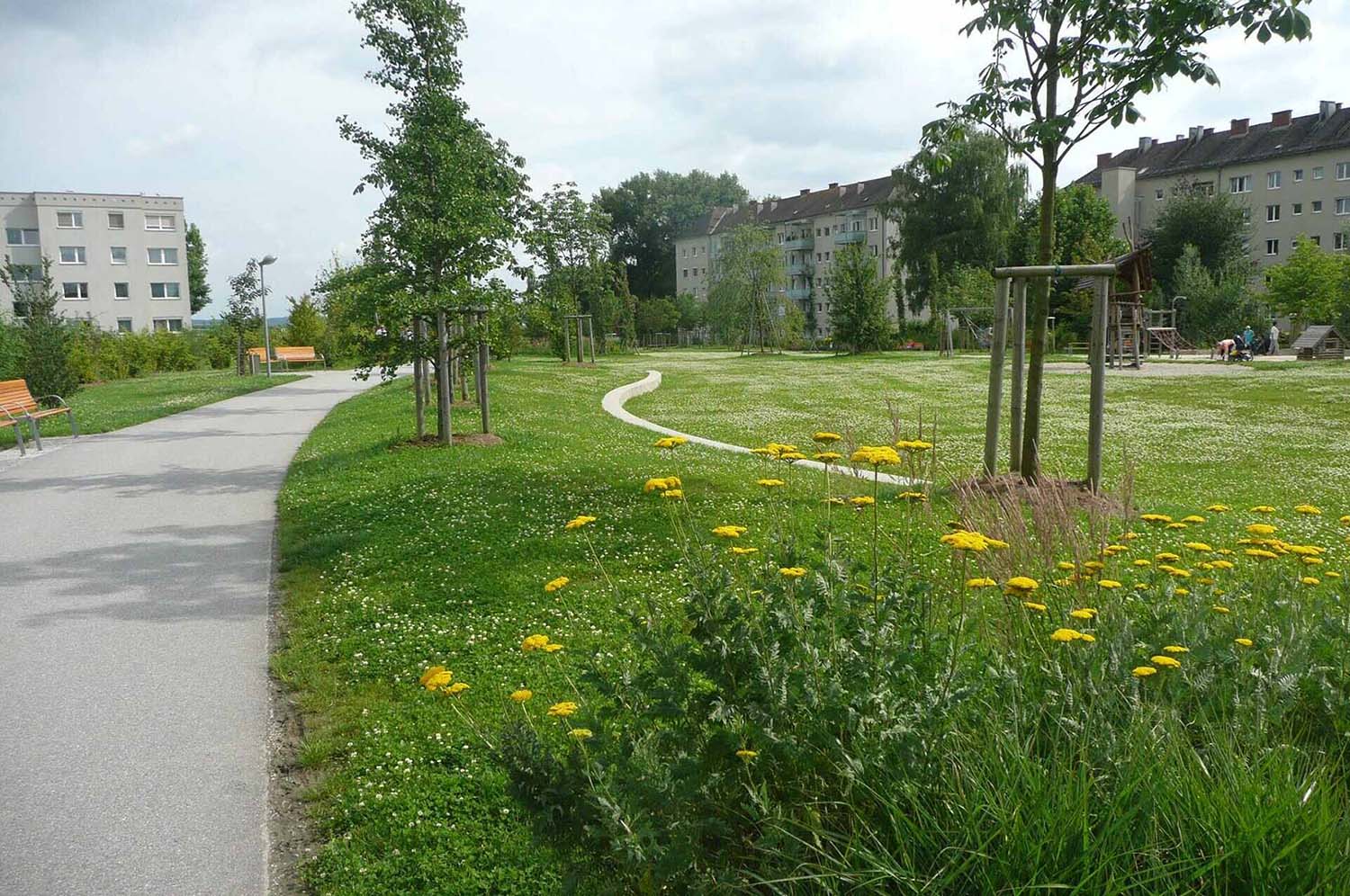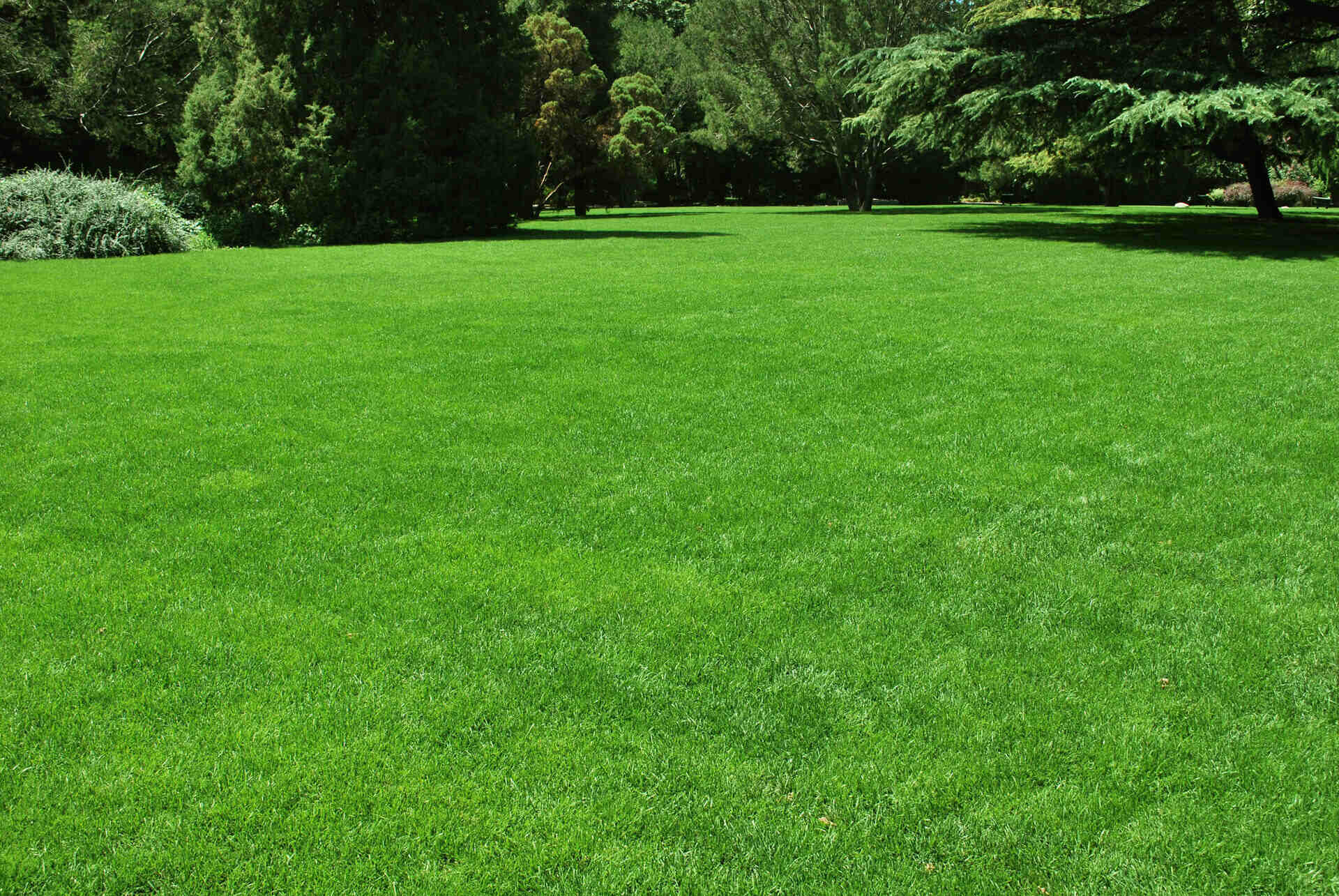Home>Garden Essentials>What Is The Green Space On A College Campus


Garden Essentials
What Is The Green Space On A College Campus
Modified: March 7, 2024
Discover the beauty and tranquility of gardens on college campuses. Explore what the green spaces have to offer, from peaceful study spots to vibrant floral displays.
(Many of the links in this article redirect to a specific reviewed product. Your purchase of these products through affiliate links helps to generate commission for Storables.com, at no extra cost. Learn more)
Introduction
Welcome to the lush and vibrant world of college campuses! From sprawling lawns to tranquil gardens, green spaces play a crucial role in enhancing the environment and atmosphere of educational institutions. These pockets of nature provide a welcome refuge for students, faculty, and staff alike, offering a retreat from the hustle and bustle of academic life.
Green spaces on college campuses encompass a variety of natural elements, including gardens, parks, arboretums, and nature trails. They serve as a haven for biodiversity, housing an array of plant and animal species. But beyond their aesthetic appeal, these areas have a profound impact on the overall well-being and quality of life on campus.
Join us as we embark on a journey to explore the significance of green spaces on college campuses, uncovering their benefits for individuals and the environment. Discover the enchanting world of these tranquil oases and gain insight into the challenges involved in maintaining and preserving these precious pockets of nature.
So, grab your virtual walking shoes and let’s delve into the wonderful world of green spaces on college campuses!
Key Takeaways:
- Green spaces on college campuses provide a peaceful retreat for students and staff, reducing stress and promoting mental well-being through nature’s calming effects.
- These natural havens also support environmental sustainability, offering educational opportunities and contributing to biodiversity and ecological preservation.
Read more: What Colleges Offer Interior Design
Definition of Green Space
Before we dive deeper into the topic, it’s crucial to establish a clear understanding of what we mean by “green space” on college campuses. In simple terms, green space refers to any area that is predominantly covered by grass, trees, or other vegetation. These spaces are intentionally designed and maintained to provide a natural and peaceful environment.
Green spaces on college campuses can take various forms, ranging from expansive lawns and botanical gardens to small gardens or even rooftop green spaces. They can be found in different locations on campus, including courtyards, quad areas, and even alongside buildings.
The main characteristic of green spaces is their abundance of plant life. They are specifically created to promote biodiversity and serve as a hub for various species of plants and wildlife. These areas are carefully curated to create an inviting and serene ambiance for members of the campus community to enjoy.
Green spaces often feature native and ornamental plants, offering an opportunity for students and staff to connect with nature and experience its calming effects. Additionally, these areas may include seating areas, walking paths, and other amenities to encourage outdoor activities and interaction with the natural surroundings.
While the specific layout and design of green spaces may vary from one campus to another, the underlying concept remains the same. They provide a sanctuary amidst the concrete jungle of educational institutions, serving as a reminder of the beauty and importance of the natural world.
Now that we have established the definition of green space, let’s explore the many reasons why these areas are essential for college campuses.
Importance of Green Space on College Campuses
Green spaces play a pivotal role in shaping the overall atmosphere and experience on college campuses. They are not just decorative add-ons, but rather essential components that contribute to the well-being and success of students, faculty, and staff. Here are some key reasons why green spaces are important on college campuses:
1. Enhancing Physical Health:
Green spaces provide opportunities for physical activity and exercise. They offer a refreshing change from indoor classrooms and can inspire individuals to engage in outdoor activities such as walking, jogging, or playing sports. These activities contribute to overall fitness levels and help in reducing stress and anxiety.
2. Improving Mental Well-being:
Being surrounded by nature has a profound impact on mental health. Studies have shown that spending time in green spaces can reduce stress, improve mood, and increase concentration and productivity. Green spaces serve as a natural escape where students and staff can relax, rejuvenate, and recharge.
3. Creating a Sense of Community:
Green spaces act as a gathering point for the campus community, fostering a sense of belonging and connection. They provide a space for students, faculty, and staff to interact, socialize, and engage in shared activities. This promotes a supportive and inclusive campus culture.
4. Supporting Academic Success:
Green spaces have a positive impact on academic performance. Research has shown that exposure to nature can enhance creativity, problem-solving skills, and cognitive function. Having access to green spaces encourages students to study in a peaceful and inspiring environment, leading to improved learning outcomes.
5. Promoting Sustainability and Environmental Stewardship:
Green spaces serve as living examples of sustainable practices and environmental conservation. They provide a platform for educational initiatives on topics such as ecological preservation, gardening, and sustainable living. These spaces inspire students to become environmentally conscious individuals and future leaders in sustainability.
In summary, green spaces are vital for college campuses as they contribute to physical health, mental well-being, community building, academic success, and environmental stewardship. They create a harmonious balance between the built environment and the natural world, enriching the overall campus experience for everyone involved.
Benefits of Green Space on College Campuses
The presence of green spaces on college campuses brings about a multitude of benefits that positively impact the entire campus community. Let’s explore some of the key benefits of having green spaces on college campuses:
1. Stress Reduction:
Green spaces have a calming effect on individuals, helping to reduce stress levels and promote relaxation. The sight and sounds of nature, along with the opportunity to engage in outdoor activities, provide a much-needed break from the academic pressures of college life.
2. Improved Focus and Productivity:
Spending time in green spaces can enhance concentration, focus, and productivity. The soothing environment and connection with nature help to clear the mind and improve cognitive functioning, leading to better academic performance and learning outcomes.
3. Enhanced Physical Health:
Green spaces encourage physical activity and exercise, which are essential for maintaining good health. Whether it’s walking, jogging, or participating in outdoor sports, these activities contribute to overall fitness and well-being.
4. Increased Social Interaction:
Green spaces serve as a gathering place for students, faculty, and staff to connect and build relationships. They provide opportunities for social interaction, conversation, and collaborative activities, fostering a sense of community and camaraderie on campus.
5. Environmental Education:
Green spaces offer invaluable opportunities for environmental education and awareness. By observing and interacting with the natural world, students can learn about ecological systems, sustainability practices, and the importance of preserving biodiversity.
6. Improved Air Quality:
Plants in green spaces act as natural air purifiers, filtering pollutants and improving air quality on campus. The presence of vegetation helps to reduce carbon dioxide levels, while also releasing fresh oxygen into the atmosphere, creating a healthier environment for everyone.
7. Aesthetic Appeal:
Green spaces enhance the visual appeal of college campuses. They provide a beautiful backdrop for campus buildings, adding vibrancy and natural beauty to the surrounding scenery. These aesthetically pleasing environments contribute to a positive overall campus experience.
These are just a few of the many benefits of green spaces on college campuses. From improving mental and physical health to fostering community engagement and environmental education, the positive impact of green spaces extends far beyond their visual appeal. They are an invaluable asset that enriches the overall college experience for both students and staff.
Environmental Impact of Green Space on College Campuses
Green spaces on college campuses have a significant environmental impact, contributing to the sustainability and ecological well-being of the campus community and beyond. Let’s explore the various ways in which green spaces positively affect the environment on college campuses:
1. Biodiversity Support:
Green spaces provide habitats for a variety of plant and animal species. By incorporating native plants and creating diverse landscapes, college campuses can support local ecosystems and contribute to the preservation of biodiversity. These spaces act as mini wildlife sanctuaries, offering refuge to birds, insects, and other creatures.
2. Carbon Sequestration:
Plants in green spaces play a crucial role in absorbing carbon dioxide, a greenhouse gas responsible for climate change. Through the process of photosynthesis, plants convert carbon dioxide into oxygen, helping to combat climate change by reducing greenhouse gas emissions on campus.
3. Stormwater Management:
Green spaces play a vital role in managing stormwater runoff. The vegetation and soil in these areas act as natural filters, absorbing and slowing down rainwater, thus reducing the burden on the campus stormwater drainage system. This helps to prevent erosion, mitigate flooding, and improve water quality.
4. Cooling Effect:
Green spaces have a cooling effect on the surrounding environment. Through evapotranspiration, plants release moisture into the air, which helps to reduce ambient temperatures. This natural cooling effect can significantly decrease the reliance on energy-intensive air conditioning systems, leading to energy savings.
Read more: How To Freeze Green Beans From The Garden
5. Noise Reduction:
Green spaces act as natural sound barriers, absorbing and deflecting noise pollution. The trees, shrubs, and other vegetation in these areas provide a buffer between campus buildings and external noise sources, creating a quieter and more peaceful environment for students, faculty, and staff.
6. Soil Health and Erosion Control:
The presence of green spaces helps maintain healthy soil conditions on college campuses. Vegetation helps to prevent soil erosion by holding soil particles together and reducing the impact of rainfall. The roots of plants also help to improve soil structure and increase its ability to absorb and retain water.
7. Sustainable Landscaping Practices:
Green spaces on college campuses provide an opportunity to implement sustainable landscaping practices. This includes using compost and organic fertilizers, practicing water conservation through efficient irrigation systems, and minimizing or eliminating the use of harmful pesticides and herbicides. These practices contribute to the overall sustainability and environmental stewardship on campus.
By incorporating and preserving green spaces, college campuses can make a positive impact on the environment. From supporting biodiversity and carbon sequestration to managing stormwater and reducing noise pollution, these green spaces play a vital role in creating a sustainable and eco-friendly campus environment for future generations.
Social and Psychological Effects of Green Space on College Campuses
Green spaces on college campuses have a profound impact on the social and psychological well-being of students, faculty, and staff. These natural environments create a positive and nurturing atmosphere that supports various aspects of mental health and interpersonal connections. Let’s explore the social and psychological effects of green space on college campuses:
Read more: What To Put In A College First Aid Kit
1. Stress Reduction and Mental Well-being:
Spending time in green spaces has been proven to reduce stress levels and promote mental well-being. The sights, sounds, and smells of nature help to alleviate anxiety and improve overall mood. The tranquility and serenity of green spaces provide a much-needed escape from the pressures of academic life.
2. Restorative Effects:
Green spaces offer a restorative environment that helps to recover mental energy and enhance cognitive functioning. Spending time in nature can improve concentration, attention, and creative thinking. Students and faculty who take short breaks in green spaces often return to their tasks with a renewed focus and increased productivity.
3. Social Interaction and Community Building:
Green spaces serve as gathering places for students, faculty, and staff, fostering social interactions and building a sense of community on campus. These spaces provide opportunities to engage in group activities, outdoor events, and informal conversations, promoting social connections and a sense of belonging.
4. Physical Health and Well-being:
Green spaces support physical health, which in turn has a positive impact on mental well-being. Outdoor activities and exercise in green spaces contribute to improved physical fitness, cardiovascular health, and overall well-being. Being in nature also encourages individuals to adopt an active and healthy lifestyle.
Read more: What Colleges Have Ultimate Frisbee Teams?
5. Academic Performance:
Green spaces have been shown to enhance academic performance. The calming environment and connection with nature help to reduce stress, improve focus, and increase cognitive function. Students who have access to green spaces for studying and learning tend to perform better academically.
6. Sense of Aesthetics and Beauty:
Green spaces provide an aesthetic appeal that enhances the overall beauty of college campuses. The visual allure of nature creates a positive atmosphere, promoting a sense of peace, tranquility, and harmony. The presence of green spaces adds to the overall appeal and character of the campus environment.
7. Connection with the Natural World:
Green spaces on college campuses offer an opportunity for individuals to connect with the natural world. The presence of plants, trees, and wildlife provides a sense of environmental connectedness and fosters an appreciation for nature. This connection with the natural world promotes a deeper understanding of sustainability and environmental stewardship.
In summary, green spaces on college campuses have significant social and psychological effects. They promote stress reduction, mental well-being, community building, physical health, enhanced academic performance, aesthetic appreciation, and a stronger connection with the natural world. By providing these vital spaces, colleges create an environment that supports the holistic well-being of their students, faculty, and staff.
Examples of Green Space on College Campuses
College campuses around the world embrace the beauty of green spaces, integrating them into their design and layout. These vibrant pockets of nature provide a range of green spaces for students, faculty, and staff to enjoy. Here are a few examples of green spaces commonly found on college campuses:
Read more: What Is A Green Gable?
1. Campus Gardens:
Many college campuses feature gardens that showcase a variety of plant species. These gardens can range from small, herb or vegetable gardens to larger, ornamental gardens. They provide a tranquil space for individuals to connect with nature, learn about botanical diversity, and even engage in gardening activities.
2. Arboretums:
Arboretums are curated collections of trees and woody plants, often arranged in a systematic way. They serve as outdoor classrooms, enabling students to study and appreciate different tree species. Arboretums on college campuses not only contribute to the aesthetic appeal but also provide a living laboratory for botany, horticulture, and forestry studies.
3. Campus Parks:
Many college campuses set aside large areas as parks, providing expansive green spaces for recreational activities and relaxation. These parks often feature open grassy areas, walking paths, benches, and even recreational facilities like sports fields or picnic areas. They serve as gathering places for the campus community, encouraging social interactions and outdoor events.
4. Courtyards and Quad Areas:
Courtyards and quad areas are commonly found in college campuses, offering smaller green spaces within the heart of academic buildings. These spaces are often adorned with trees, flowers, and seating areas, providing a peaceful spot for students and faculty to take a study break or engage in conversations with peers.
Read more: What Is A Green Space
5. Environmental Reserves and Nature Preserves:
Some college campuses are fortunate to have expansive areas of undeveloped land dedicated to wildlife conservation and environmental preservation. These reserves and preserves serve as natural habitats for indigenous flora and fauna, offering opportunities for research, educational programs, and outdoor exploration.
6. Rooftop Gardens:
Rooftop gardens are becoming increasingly popular on college campuses, especially in urban areas with limited ground space. These innovative green spaces utilize unused rooftops to create gardens, providing students and staff with access to nature and outdoor environments. Rooftop gardens not only contribute to the aesthetic appeal of the campus but also provide insulation, reduce stormwater runoff, and improve air quality.
7. Sustainable Landscaping Initiatives:
While not specific to one particular area, sustainable landscaping initiatives are increasingly being implemented on college campuses. These initiatives focus on incorporating native plants, xeriscaping techniques, rainwater harvesting systems, and other sustainable practices to minimize environmental impact and promote biodiversity.
These are just a few examples of the various green spaces that can be found on college campuses. Each space offers its own unique features and benefits, contributing to the overall beauty, sustainability, and well-being of the campus community.
Challenges in Maintaining Green Space on College Campuses
While green spaces on college campuses provide numerous benefits, their maintenance and preservation present various challenges. These challenges can arise due to financial constraints, environmental factors, and the increased demand for usable space. Here are some common challenges in maintaining green spaces on college campuses:
Read more: How To Cook Green Beans From Garden
1. Budget Constraints:
Colleges often face budget limitations, making it challenging to allocate sufficient funds for the maintenance and development of green spaces. This can result in reduced resources for landscaping, irrigation systems, plant care, and infrastructure improvements, affecting the overall health and vibrancy of the green spaces.
2. Water Management:
Ensuring proper water management is a significant challenge for maintaining green spaces on campuses. Balancing the need to provide adequate irrigation while conserving water resources can be a complex task. Campuses may face drought conditions, stringent water regulations, and outdated irrigation systems, impacting the lushness and survival of plants.
3. Pests and Diseases:
Pests and diseases pose a constant threat to the health of green spaces. Invasive species, pests, and plant diseases can rapidly spread among vegetation, causing damage and deterioration. Controlling and preventing these issues often requires careful monitoring, timely intervention, and proactive management practices.
4. Heavy Foot Traffic:
Green spaces that are highly frequented can experience heavy foot traffic, resulting in compaction of soil, damage to vegetation, and erosion. Balancing the need for access and usability with the preservation of green spaces is a challenge. Implementing appropriate pathways, signage, and educational campaigns can help manage foot traffic and protect the integrity of the green spaces.
Read more: Why Colleges Spend On Lawn Care
5. Changing Climate Conditions:
Climate change can have a significant impact on green spaces. Extreme weather events, such as heatwaves, droughts, or heavy rainfall, can stress plants and disrupt the balance of the ecosystem. Adapting green spaces to changing climate conditions requires choosing resilient plant species, implementing sustainable irrigation practices, and planning for future climate scenarios.
6. Sustainability Concerns:
Maintaining green spaces in an environmentally sustainable manner can be a challenge. The use of fertilizers, pesticides, and herbicides can have detrimental effects on the ecosystem and human health. Finding alternative, eco-friendly practices that support the health of the green spaces while minimizing environmental impacts is essential but may require additional expertise and resources.
7. Conflicting Land Use:
The demand for usable space on college campuses often competes with the preservation of green spaces. The construction of new buildings, parking lots, or sports facilities may encroach on existing green areas. Balancing the need for expansion and development with the preservation of green spaces requires careful planning, communication, and involvement of stakeholders.
Despite these challenges, colleges recognize the value of green spaces and are taking steps to overcome these obstacles. Implementing sustainable management practices, seeking external funding sources, involving the campus community in decision-making, and collaborating with experts and local organizations can help address these challenges and preserve the essential green spaces on college campuses.
Conclusion
Green spaces on college campuses are more than just patches of nature; they are vital components that enhance the overall campus experience. These areas offer a sanctuary for students, faculty, and staff, providing numerous benefits for physical and mental well-being, social interaction, academic success, and environmental sustainability.
The importance of green spaces on college campuses cannot be understated. They serve as a source of serenity and respite from the demands of academic life. These natural environments have been shown to reduce stress, improve concentration, and enhance overall mental well-being. Green spaces also promote social interaction and community building, fostering a sense of belonging and connectedness among campus members.
Furthermore, green spaces contribute to environmental sustainability. They support biodiversity, help mitigate climate change through carbon sequestration, improve air and water quality, and provide habitat for native species. These spaces also serve as educational tools, allowing students to learn about ecological systems, sustainability practices, and environmental stewardship.
Despite the benefits, maintaining green spaces on college campuses comes with challenges. Limited budgets, water management issues, pests and diseases, heavy foot traffic, changing climate conditions, sustainability concerns, and conflicting land use demands require careful planning and resource allocation. However, colleges are rising to the challenge, implementing sustainable management practices and involving the campus community to preserve and enhance these green spaces.
In conclusion, green spaces are an integral part of college campuses, providing a myriad of benefits for individuals and the environment. They contribute to a healthy and vibrant campus community, fostering well-being, fostering a sense of community, supporting academic success, and promoting environmental consciousness.
So, as you explore college campuses, take a moment to immerse yourself in these green havens. Breathe in the fresh air, feel the earth beneath your feet, and appreciate the beauty and tranquility these spaces offer. Let’s cherish and protect these green oases for generations to come.
Frequently Asked Questions about What Is The Green Space On A College Campus
Was this page helpful?
At Storables.com, we guarantee accurate and reliable information. Our content, validated by Expert Board Contributors, is crafted following stringent Editorial Policies. We're committed to providing you with well-researched, expert-backed insights for all your informational needs.





0 thoughts on “What Is The Green Space On A College Campus”